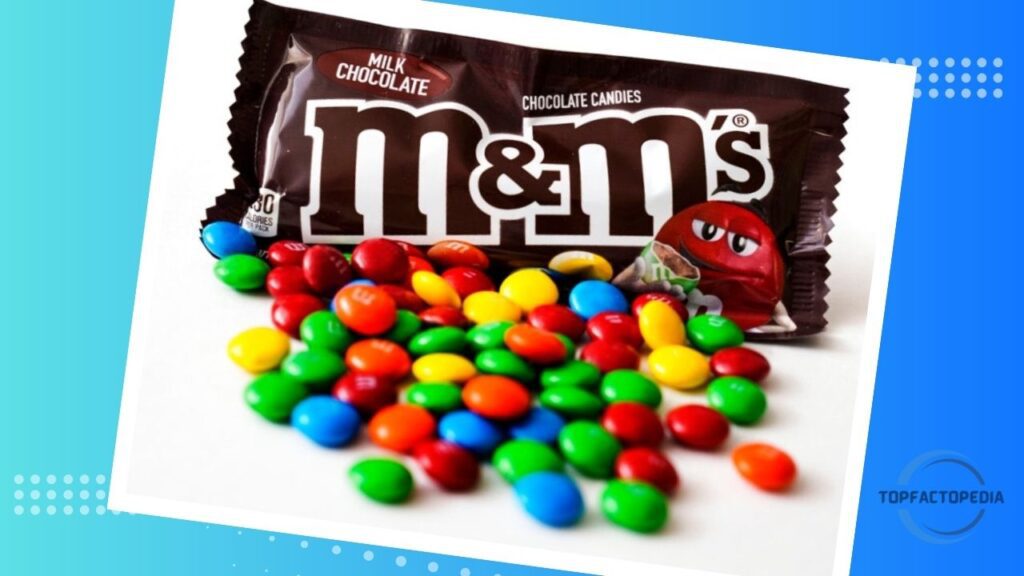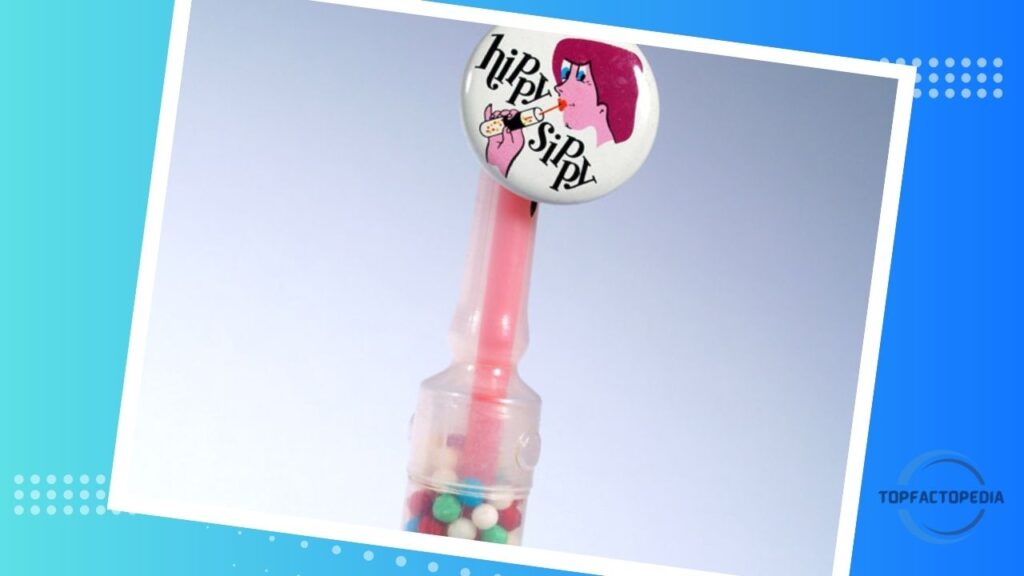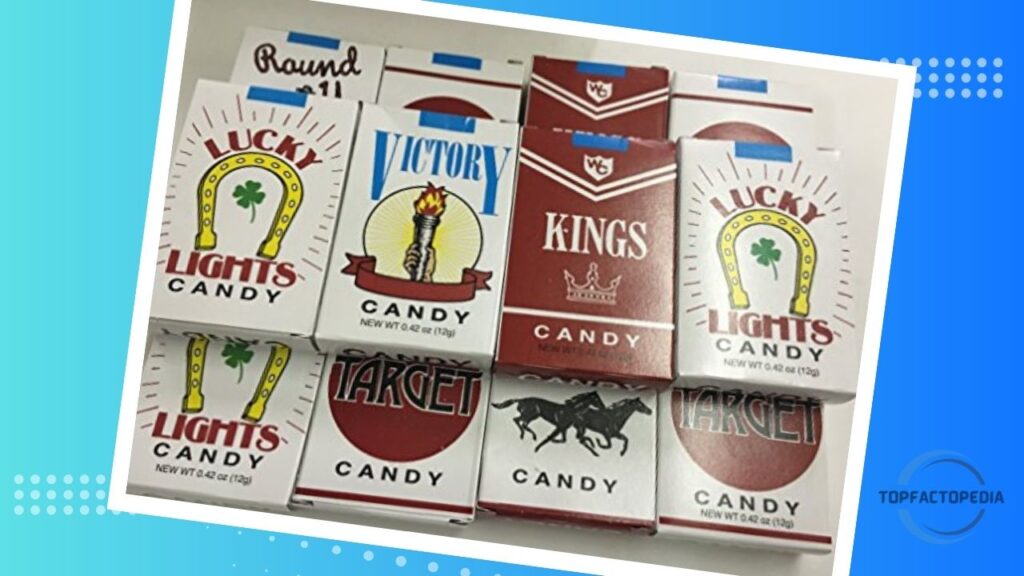Sweets, especially candies, are treasured and enjoyed by people of varying ages. However, you shouldn’t eat just any candy because not all of them are risk-free. Candies have, on occasion, been discovered to contain poisonous substances that present significant dangers to the consumer’s health. This article investigates the names of 15 dangerous banned candies that have been banned due to safety concerns, discusses the dangers associated with those candies, and offers some insights into the potentially harmful ingredients that those candies may contain. Consumers are able to protect themselves and their loved ones from potential harm by becoming educated about these risks and making decisions based on that knowledge.

The Dangers of Contaminated Candies
Contaminated candies are those that have been found to contain harmful substances beyond the permissible limits or substances that are outright banned due to their potential health risks. These substances can range from heavy metals to toxic chemicals, allergenic ingredients, and dangerous colorings. The consumption of such candies can have severe consequences for human health.
Toxic Ingredients Found in Banned Candies
High Levels of Lead
Lead is a highly toxic heavy metal that, especially when consumed by children, can result in a variety of severe health problems. It has come to light that certain prohibited candies contain lead in alarmingly high concentrations. Lead poisoning can cause developmental issues, learning disabilities, neurological damage, and even death. Lead poisoning can also cause learning disabilities.
Melamine Contamination
Melamine is a chemical compound that is occasionally added illegally to candies in order to artificially increase the amount of protein found in the candies. Ingestion of it, on the other hand, can result in kidney damage and urinary issues, and in extreme cases, it can even be life-threatening.
Excessive Artificial Sweeteners
Some of the candies that are not allowed to be sold contain potentially dangerous levels of artificial sweeteners like aspartame and saccharin. An excessive consumption of these sweeteners has been associated with a variety of health problems, including metabolic disorders, gastrointestinal issues, and an increased risk of becoming obese.
Allergenic Ingredients
It’s possible that some of the candies that have been banned contain allergenic ingredients that aren’t properly labelled, such as peanuts, tree nuts, or soy. Consuming these candies poses a significant threat to people who are allergic to peanuts and tree nuts because they can cause severe allergic reactions, including anaphylaxis, when they are eaten.
Dangerous Colorings
Candies that contain certain artificial colorings have been banned because those colorings have been linked to negative health effects. For instance, research has shown that certain colorings, such as Red 40 and Yellow 5, can cause hyperactivity in children and allergic reactions in people who are particularly sensitive.
List of Dangerous Banned Candies
16. M&Ms

Since their debut in 1941, M&M candies have evolved into one of the confectionery industry’s most well-known and well-loved brands. These miniature candies are known for their vibrant candy shells, which encase a variety of chocolate fillings, including milk chocolate, peanut butter, and a few others. These candies are typically eaten in one bite. M&Ms have established themselves as a go-to treat for get-togethers, movie nights, and even just everyday munching thanks to their irresistible crunch and smooth, creamy consistency.
While there have been occasional rumors or urban legends about M&M’s being banned due to various reasons, such as artificial coloring or health concerns. It’s essential to remember that different countries may have specific regulations and standards for food products, including candies. These regulations might involve labeling requirements, ingredient restrictions, or other factors to ensure consumer safety and health.
You may also like: The Most Dangerous Toys of All Time That Are Banned
15. Hippy Sippy

The “Hippy Sippy” is a made-up name for a candy that was allegedly sold in the past but is no longer allowed to be sold because of health and safety concerns. The presence of a harmful component that was not made public, which posed significant health risks to customers, was the primary factor that led to the prohibition of this particular candy.
The specific details of the undisclosed ingredient in Hippy Sippy have not been made public, but its potential dangers were discovered through rigorous testing and investigations conducted by regulatory authorities. The presence of this ingredient raised alarms due to its toxic nature and potential adverse effects on human health.
13. Toxic Waste Chew Bar

The “Toxic Waste Chew Bar” is a made-up confection that was available in the past but has since been taken off the market because of serious worries about its potential health effects. Because of the presence of dangerous ingredients that posed significant threats to the consumers’ health, this particular candy was prohibited from being sold.
The name itself, “Toxic Waste Chew Bar,” suggests the potential dangers associated with this candy. The specific details of the hazardous ingredients in the chew bar are undisclosed, but it is known that they were found to be toxic and harmful to human health.
Consuming the Toxic Waste Chew Bar could lead to severe health consequences, ranging from acute poisoning to long-term health issues. The ban on this candy was imposed to protect individuals, particularly children, from the potential harm posed by the dangerous ingredients it contained.
12. Haribo Sugar-Free Gummy Bears
Although it is not officially prohibited, the candy known as “Haribo Sugar-Free Gummy Bears” has attracted a lot of attention and been the subject of controversy due to the possible harm it could cause to consumers’ health. Due to the fact that they contain a sugar substitute known as maltitol, these gummy bears have gained a bad reputation for the powerful laxative effects they have when consumed in large quantities.
Maltitol is a sugar alcohol commonly used as a sweetener in sugar-free products. While it provides a sweet taste with fewer calories than regular sugar, it can have a laxative effect when consumed in excessive amounts. The Haribo Sugar-Free Gummy Bears, in particular, contain a significant concentration of maltitol, making them notorious for causing digestive discomfort and diarrhea.
11. Candy Cigarettes

“Candy Cigarettes” were a variety of candy that were designed to resemble the act of smoking traditional cigarettes and to be consumed in a manner analogous to that of smoking cigarettes. However, they have been subjected to a great deal of criticism and are prohibited in a number of countries due to worries about the influence they could have on children and the behaviour they might encourage, such as smoking.
The purpose of Candy Cigarettes was to imitate the look of real cigarettes using sugar-based materials. They often featured white sticks made of compressed sugar or chocolate, with a red-colored tip resembling a lit cigarette. These candies were packaged in boxes or wrappers that resembled cigarette packs, further adding to their visual resemblance.
10. Milky Way

Oh, the irresistible pull of the Milky Way! A delicious chocolate bar that will take your taste buds to a place that can only be described as pure bliss. The “Milky Way” candy bar is a type of confectionery that typically contains a chocolate-covered nougat centre as its primary component. It is a classic treat that appeals to consumers of all ages and is a mainstay in the confectionery industry. The confectionery brand has a rich heritage and is currently manufactured by a number of different companies all over the world.
The catchy slogan claims that “Life is better in the Milky Way,” but does this delightful treat align with a healthy lifestyle? Regrettably, the answer leans toward the negative side. In fact, it’s safe to say that indulging in Milky Way bars may have some adverse effects. While not all Milky Way bars pose concerns, there exists a specific variant that demands our attention due to its potential to wreak havoc, often underestimated by many.
9. Tamarind Lollipops
The consumption of tamarind lollipops, a confection that was once very popular, is now prohibited in some areas due to health and safety concerns. It was discovered that these lollipops, which are made with tamarind pulp, sugar, and other flavourings, contain high levels of contaminants or additives that could put the safety of the consumers at risk.
The ban on tamarind lollipops stems from the presence of harmful substances, such as excessive lead or other heavy metals. These contaminants can have severe health implications, especially when consumed regularly or in large quantities. Lead, in particular, is a neurotoxin that can cause developmental issues in children and various health problems in adults.
You may also like: 8 Outdoor Activities That are Banned in Public Places
8. Smarties
In certain schools, such as Scarborough Middle School in Maine, you may notice a notable absence of a particular powdered candy called Smarties. At first glance, Smarties appear harmless, with their small size and candy-like appearance. However, the real concern lies in how some children have been using them. Brace yourself, as it involves a rather disturbing act: snorting. Yes, you read that correctly. Kids would retreat to the back of their classrooms, crush up Smarties, and inhale them through their noses.
This behavior is not only deeply concerning, as children imitate the actions associated with consuming substances meant for adults, but it also poses serious health risks. Just like any other powder inhaled through the nose, snorting Smarties can lead to asthma attacks, long-term respiratory issues, and even the infestation of nasal maggots. It’s a troubling trend that highlights the need for awareness and intervention to ensure the well-being of our young generation.
7. Candy Corn
Candy Corn is a traditional treat for Halloween, but among people who enjoy sweets, opinionss are split on whether they like it or not. Despite the fact that it is still widely consumed during the spooky season, candy corn has on occasion been the subject of regulations and outright prohibitions.
One of the concerns associated with Candy Corn is its high sugar content. This tri-colored confection is primarily made up of sugar, corn syrup, and artificial flavorings. Excessive consumption of sugary treats like Candy Corn can contribute to health issues such as obesity, tooth decay, and diabetes. Due to its potential negative impact on overall health, some health-conscious individuals and organizations have called for restrictions on the availability and consumption of Candy Corn.
6. Butterfinger

The beloved candy bar Butterfinger, which is known for its one-of-a-kind combination of crispety, crunchety, and peanut buttery goodness, has been the subject of more than its fair share of controversy and has been banned in some settings.
One of the primary concerns surrounding Butterfinger is its high sugar and fat content. This delectable candy bar is packed with sugar, corn syrup, and hydrogenated oils, which contribute to its irresistible taste. However, excessive consumption of such high-calorie and sugary treats can lead to health problems like obesity, diabetes, and heart disease. In an effort to promote healthier eating habits, some schools or institutions have chosen to ban Butterfinger and similar candies from their premises.
5. Sour Patch Kids
Sour Patch Kids, those mouth-puckering, tangy-sweet candies that have become a favourite of many, have also been subjected to their fair share of scrutiny and bans in certain contexts. This is because of the candies’ reputation for causing dental erosion.
One of the primary concerns surrounding Sour Patch Kids is their high sugar content. These bite-sized candies are coated with a sour sugar coating that gives them their signature tartness. However, excessive consumption of sugary treats can contribute to various health issues, including tooth decay, obesity, and diabetes. As a result, some schools or organizations focused on promoting healthy eating habits have chosen to ban Sour Patch Kids and other similar candies from their premises.
4. Hershey’s Take 5
Hershey’s Take 5, a delectable candy bar known for its combination of sweet and savoury flavours, has been the subject of restrictions and bans in certain settings due to a number of different concerns.
One of the primary reasons for the ban on Hershey’s Take 5 is its high calorie and fat content. This candy bar boasts a rich blend of ingredients, including chocolate, caramel, peanut butter, pretzels, and peanuts, making it a delightful treat for many. However, its indulgent combination also means that it can be quite calorie-dense and contain a significant amount of saturated fat. In environments that prioritize healthy eating or in settings where individuals are advised to limit their calorie and fat intake, Hershey’s Take 5 has been banned or restricted to promote healthier choices.
You may also like: 10 Most Scariest Jobs in the World
3. Nestle Magic Ball
Regrettably, the Nestle Magic Ball, a well-liked confection from times gone by, has been made illegal as a result of rising concerns about its safety and new regulations. This confection was a hollow chocolate ball that was filled with a variety of different small toys or prizes. It was famous for its element of surprise and was known to be fun.
The ban on Nestle Magic Ball primarily stemmed from concerns regarding the safety of the small toys or trinkets hidden inside the chocolate. As regulations regarding food safety and choking hazards became stricter, it was determined that the small toys inside the candy ball posed a potential risk, especially for young children who may accidentally swallow or choke on them. Consequently, the production and distribution of Nestle Magic Ball were halted to ensure consumer safety.
2. Baby Ruth
Baby Ruth candy bars are well-known for their decadent and gratifying flavour, which features a harmony of nuttiness, sweetness, and chewiness. They are a popular sweet for people who enjoy chocolate and can be discovered in the candy aisles of convenience stores, supermarkets, and other retail establishments.
It’s worth noting that regulations regarding food products may vary from country to country, and certain ingredients or formulations of Baby Ruth bars could be restricted or banned in specific regions due to local regulations or health concerns. However, as a whole, Baby Ruth candy bars are not considered banned candy.
1. Fun Dip
A flavoured powdered sugar mix is combined with a sugary candy stick to create the one-of-a-kind confection known as Fun Dip. The idea is straightforward, but it’s still a lot of fun: you just dip the candy stick into the flavoured powder, lick it, and then you get an explosion of sweet and sour flavours. It provides a way to enjoy sweets in a way that is both entertaining and engaging.
While Fun Dip continues to be a beloved candy option for many, it’s possible that regulations or restrictions on certain ingredients or formulations of Fun Dip could exist in specific regions due to local regulations or health concerns. These regulations may vary from country to country.
Health Risks Associated with Banned Candies

Consuming banned candies can have serious health consequences. Here are some of the risks associated with these toxic threats:
Lead Poisoning
Ingesting candies contaminated with high levels of lead can lead to lead poisoning. This can result in developmental delays, learning difficulties, impaired cognition, behavioral issues, and even organ damage.
Kidney Damage
Melamine-contaminated candies can cause severe damage to the kidneys, leading to kidney stones, urinary tract infections, and renal failure. Prolonged exposure to melamine can have long-term implications for kidney health.
Neurological Disorders
Toxic substances found in banned candies, such as lead, can have detrimental effects on the nervous system. Neurological disorders like seizures, developmental delays, and cognitive impairments may occur as a result of exposure to these toxins.
Allergic Reactions
Candies containing undisclosed allergenic ingredients can trigger allergic reactions in individuals with allergies or sensitivities. These reactions can range from mild symptoms like hives and itching to severe reactions like difficulty breathing and anaphylaxis.
Cancer Risks
Certain banned candies may contain carcinogenic substances, such as colorings or additives, which can increase the risk of cancer development over time. Prolonged exposure to these harmful ingredients can have serious implications for long-term health.
Regulatory Measures for Banned Candies
To protect consumers from dangerous candies, regulatory bodies have implemented stringent measures. These measures involve testing and inspection of candies, establishing maximum permissible limits for certain substances, and imposing bans on specific ingredients or products. However, despite these efforts, some banned candies may still find their way into the market through illegal or unregulated channels.
How to Identify and Avoid Banned Candies

To safeguard yourself and your loved ones from the dangers of banned candies, consider the following precautions:
Check Product Labels
Carefully read the product labels of candies before purchasing them. Look for any warnings or mentions of allergens, artificial sweeteners, or colorings that you may want to avoid.
Research Reliable Brands
Identify trusted candy brands that prioritize safety and quality. Conduct research and read customer reviews to ensure that the brands you choose have a positive reputation and adhere to strict quality standards.
Purchase from Trusted Sources
Buy candies from reputable stores and authorized sellers. Avoid purchasing candies from unknown or unreliable sources, as they may not undergo proper safety checks or follow regulations.
Report Suspicious Products
If you come across candies that you suspect may be unsafe or banned, report them to the relevant authorities. By doing so, you contribute to protecting others from potential harm and help authorities take appropriate actions.
Conclusion
While candies are a delightful indulgence, it’s crucial to be aware of the potential dangers associated with banned candies. Contaminated candies can contain toxic substances that pose serious health risks, such as lead, melamine, excessive artificial sweeteners, allergenic ingredients, and dangerous colorings. These harmful ingredients can lead to various health problems, including lead poisoning, kidney damage, neurological disorders, allergic reactions, and increased cancer risks. By staying informed, reading product labels, purchasing from trusted sources, and reporting suspicious products, consumers can safeguard themselves and their families from the perils of banned candies.
Few More Queries
- Are all candies dangerous?
No, not all candies are dangerous. However, certain banned candies may contain toxic substances that pose health risks.
- How can I identify banned candies?
Checking product labels, researching reliable brands, and purchasing from trusted sources can help you identify and avoid banned candies.
- What are the health risks associated with banned candies?
Banned candies can lead to lead poisoning, kidney damage, neurological disorders, allergic reactions, and increased cancer risks.



